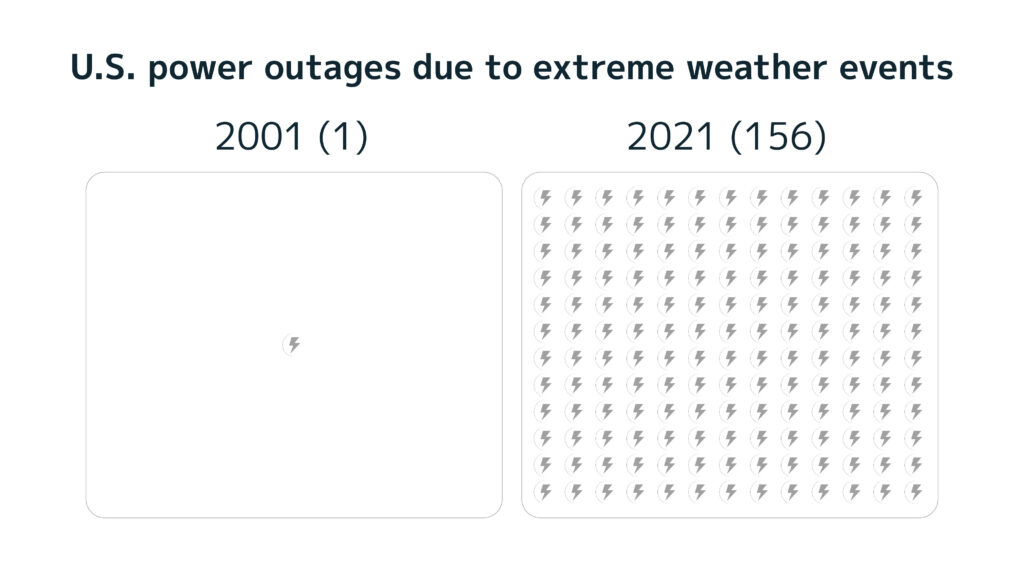By Ahmad Wani, CEO & Co-Founder
Overview
Until the end of the year, public corporations won’t know for certain the Securities and Exchange Commission’s (SEC) final rule on climate risk disclosure. However, the draft rule likely won’t deviate much from the SEC’s original intent and is likely to follow the Task Force for Climate-Related Financial Disclosure (TCFD)’s recommendations. Regarding physical climate risk, the SEC will enforce that companies disclose to their investors, beginning in 2024, how climate-related risks have or are likely to have a material impact on the business and its financial statements. Companies will also have to disclose how these risks have or are likely to affect their business strategy, business model, and outlook.
The proposed rule asks companies to identify the physical impacts (both short-term weather events — flooding, tornadoes and hurricanes — and long-term weather patterns — higher temperatures, sea-level rise, or drought) have on financial performance. By unmasking their underlying risks, companies can project cash flow impairment, increased loss reserves, expenditures, and capitalized costs related to risk mitigation and climate-related opportunities.
If implemented, the rules would end the fragmented, inconsistent patchwork of voluntary ESG reporting guidance, and organizational stakeholders will have a clear view of their climate-related risks.
We agree with the SEC. Institutions must fundamentally change how they consider and incorporate climate risk into their business strategy.
Physical Climate Risk Should Consider Dependency Risk
Measuring climate risk in terms of only physical damage to buildings is an incomplete picture. Extreme weather and climate change also disrupt lifelines, such as power grids, transportation networks, and people. Disrupted lifelines make up dependency risk. The infrastructure budget deficit affects operability, employees, customers, supply chains, and the ability of organizations to maintain operations and generate steady cash flow.
In 2001, the number of weather-related power outages was an order of magnitude less than in 2021. According to the Department of Energy, in 2001, the U.S. suffered one weather event, causing 47 days of power downtime. Two decades later, the U.S. experienced 156 power outages associated with extreme weather events. The 2021 power outage crisis in Texas, which racked up $23 billion in losses due to a 13-day power blackout, demonstrates the vulnerabilities companies’ operations face due to dependency risk.

Measuring Physical Climate Risk
Today, catastrophe modeling firms focus on a one-dimensional view of risk: they measure climate risk in terms of the repair cost to a building if it was damaged in a hazard, rather than measuring total business impact.
At One Concern, we have developed a new risk metric, One Concern Downtime Statistic™ (1CDS™), for evaluating physical climate risk, measuring the degree of downtime an enterprise faces due to perils – flooding, high wind, and earthquakes. For example, how long a business’s operation can be disrupted due to a direct hit to the facility or a power substation three miles out getting affected, or a supplier 100-miles out getting disrupted due to the port being down.
1CDS measures the amount of time a commercial property will be inoperable, both due to direct damage and indirect dependency. The statistic estimates an enterprise’s financial losses due to this operational downtime. The downtime statistic can also create benchmarks for analyses, disclosure, monitoring, and assessment of mitigation and adaptation.
Foundational Technology Behind Downtime Statistic
To arrive at the Downtime Statistic, One Concern built a U.S. digital twin, One Concern Domino™, of the natural and built environment, forming the foundation for downtime statistics. Before completing our digital twin, there was no visual representation of how U.S. infrastructure – every electric pole, substation, crane, port, airport, road, highway, and bridge–is connected to commercial buildings. So, combining ground truth data with machine intelligence, we generated a synthetic digital twin of U.S. infrastructure.
One Concern’s advanced risk visualization technology is the foundation that makes downtime statistics possible. The digital twin maps the lifelines within a 30-mile radius that support a building’s operations. As a result, we can forecast physical, dependency, and financial risks.
Discover, Measure and Report Your Physical Climate Risk
One Concern helps customers understand their property’s direct structural risk from climate, natural disasters, and extreme weather and the networks their property depends on to remain operational. We identify downtime across multiple hazards and return periods, including the impact of climate change under the scenario of 1.8 degrees Celsius temperature increase. If your organization is interested in measuring your enterprise’s physical risk to inform SEC disclosures, One Concern Domino is available as a resource to you.
